Overview
Job Cost provides a simple and efficient method to keep track of and record income and expense for individual jobs. This way you'll always know whether your bids are accurate and what your income (or loss) for the job was. With the integration to the other programs in the Advanced Accounting 7 system data entered in other modules automatically flows into the Job Cost system or you can run the system in a semi-standalone process, entering the transactions using JC-C, Transactions in this module.
The terms Job and Project have the same meaning in this document.
Below is a list of the available programs in the Job Cost module with a brief summary of each.
A - Estimates
B - Projects
C - Transactions
D - Cost Codes
E - Purge Estimates/History
F - JCMS Configuration Info
Use this program to enter/change/print an estimate/change order for a job or convert an estimate to a job. All jobs must start here even if you convert it to a job immediately upon entering it.
In a single screen this program displays all the important information about the current status of a job. Project listing, job cost analysis and WIP reports are also available from this option. When the project is finished use this option to close it. Certain information about the job, other than costs and receipts, can change during the project and that information can be modified here.
All applicable Advanced Accounting 7 programs feed directly into the Job Cost system. However, you can also enter transactions directly using this program. Use this program to print or post those transactions.
![]() Any transactions entered/posted here will NOT affect other modules, e.g., Accounts Payable, Accounts Receivable, General Ledger, and so on.
Any transactions entered/posted here will NOT affect other modules, e.g., Accounts Payable, Accounts Receivable, General Ledger, and so on.
Enter/print the costing information records that are used when entering Estimates and Jobs.
Delete records from the estimate file that are older than a certain date (i.e., inactive, never made into orders), or records from the project history file.
F - Job Cost Configuration Info
Enter setup data that only affects Job Cost.
This is the program you will use to record each employee's hours and the jobs they worked on. You will be able to print out this information (both current and history) and post the hours to the job and the payroll module if appropriate.
![]() This is different from the Time Card entry routines included with Advanced Accounting 7. In this program you will be able to assign a job and task to each entry, if desired. Also, this entry program uses the time card rates entered in JC-H where the base time card entry uses rates entered in PR-Q. The results, however, are the same. The hours and amounts will be added to the employee's pay entry (PR-B). Entries made only through PR-B will not be posted to any jobs.
This is different from the Time Card entry routines included with Advanced Accounting 7. In this program you will be able to assign a job and task to each entry, if desired. Also, this entry program uses the time card rates entered in JC-H where the base time card entry uses rates entered in PR-Q. The results, however, are the same. The hours and amounts will be added to the employee's pay entry (PR-B). Entries made only through PR-B will not be posted to any jobs.
As with cost codes in the Job Cost module, these codes hold information about the default rates that apply for the various jobs an employee might perform. Using this method, you don't need to remember how much you pay for each skill or job. Simply choose the appropriate time card code, and it will have the correct rates.
This program allows you to delete records from the time card history file.
Before You Setup Job Cost
This process assumes that Advanced Accounting 7 has been installed properly and that you are familiar with both its specific operation and the general operation of any CAS program. This section provides a step-by-step procedure for entering the kinds of information handled by Job Cost. Before proceeding, let's explore some of the programs in your new software.
We have included a set of data files on your distribution diskette that represent a hypothetical construction company. This sample data includes several "projects." You may add change orders to these projects, record transactions for them, or close them. All the data has been set up so that you may use the fully integrated approach or just enter transactions (JC-C - Transactions).
The normal starting point in using Job Cost is to set up a beginning estimate for a project using JC-A - Estimates/Change Orders. If you press the F2 key in the Project Code field, the current projects will be listed. You may choose one of these projects and put in a change order or enter information for a new project. Be sure to try putting in some cost codes for the project or change order. Without entering these codes, you won't be able to record costs. Also, try converting an estimate to a job, starting by pressing the F5 key.
From the main menu, choose the next option, JC-B - Projects. Here you'll be able to see all the current information about a project. Display a project by pressing the F2 key in the Project Code field and then pressing the ENTER key with the cursor bar on the appropriate line of the project listing. Press the ENTER key again to find the job record. All current information about that job will be displayed. You may press the PAGE DOWN key to see a "second page" of information about that job. This information, including the Percent Complete entry for the job as a whole, may be changed at any time. You may also use this screen to enter completion percentages for individual cost code categories by pressing F3 and choosing the appropriate task category. Return to the main screen by pressing ESC and answering the save question as appropriate.
From the main menu now choose JC-C - Transactions. You can either enter transactions directly to the project here or by using the appropriate Advanced Accounting 7 programs. Those programs include: AP-B and AR-B - Enter/Change Vouchers, AR-C - Record Payments, SO-A - Sales Orders, SO-F - Invoicing, PO-A - Purchase Orders, PO-D - Receiving P/Os, PR-B - Enter Payroll Info and PR-D - Print Payroll Checks. You should try entering transactions using both methods.
Next, try running JC-D - Cost Codes to enter or change the basic cost code information, and JC-F - Job Cost Configuration Info to enter or change the setup options.
An integral part of Job Cost is the Time Card module. These programs enable you to keep track of the time spent on each project by your employees. Even if you decide not to use the integrated approach, you may still use these programs. The only difference is that you will not make entries for a specific employee. Also, you will be given the option to post time card entries to the appropriate jobs after entry. Using the integrated approach, this would occur automatically when the employee's paycheck is printed and posted. Make sure you print the time card while you are in the entry phase. Notice that you get a report of the lines entered and another with the number of hours recorded for each date of the pay period. This will help you make sure you don't forget any entries!
While you're running the programs described above, try printing out some of the sample information. Report options are displayed at the bottom of the screen specific to each program. In most cases you can get a report by pressing the ^R (CTRL+R) key. This key sequence will either take you directly to the report program or will display another menu of available reports. In Time Card entry, you press ^R for the report menu and ^P to print the current time card you are editing.
Continue this process until you're comfortable with how Job Cost operates. Now you're ready to make the changes necessary to merge the Job Cost system into your daily operations.
Customizing Job Cost to Your Needs
Before proceeding with the customizing process, you need to consider how tightly you want your project management to be "integrated" with the accounting functions within Advanced Accounting 7.
The "integrated" approach means that you will use the Accounts Payable functions to enter your materials and sub-contractor costs; the Accounts Receivable functions to enter your billings and receipts; and the Payroll functions to enter your labor costs. All of these transactions are identified by the appropriate project information and automatically update your project records. Because this method makes use of a General Ledger that coordinates and confirms that your transactions are in balance, you will have a detailed audit trail for all your transactions. You will be able to produce accurate financial statements based on the information in your system.
You may also decide to use this method without having a formal inventory system; if so, you would use A/P vouchers rather than purchase orders to charge the materials you order to a project.
The "stand-alone" approach means that you are not using the various accounting functions within Advanced Accounting 7. Instead, you will use the project transactions option within Job Cost to enter your billings, receipts, labor and so on. This approach means that you do not have to "balance" against a General Ledger and will require fewer steps to get started. Your project records will be accurately maintained on a per-project basis, but you will not be creating the overall summary information that is used to create accurate financial statements about the health of your business.
If you choose the "stand-alone" approach, you need but one General Ledger account. You may enter customers during start-up or whenever you add a job or estimate associated with a customer not already in the system's files.
You can start with the "stand-alone" approach and later set up the necessary information to get started with the "integrated" approach; however, because of the way transactions are handled, you should make this change at the start of a project.
If you start with the "stand-alone" approach and later find you want to use one of the accounting functions (such as adding inventory control or payroll information), return to the startup procedure discussed here and follow the steps for the "integrated" approach.
The sections below cover 3 general phases:
1. Preparing for setup: Planning, accumulating your data.
2. Entering initial information: Establishing system defaults and entering summary and detailed information as of your startup date (e.g., the end of a quarter).
3. Updating information with recent or ongoing transactions (any transactions since your startup date).
You will probably want to maintain your previous bookkeeping system (whether manual or computerized) as you implement each one of these phases. By the final phase, you will be running "in parallel" with your former system and will then be able to determine when you are ready to handle all transactions exclusively through Job Cost.
Phase 1: Preparing for Setup
A. Run BKCLRDAT to remove sample data
The previous steps should have helped you decide if minor modifications to the chart of accounts and cost codes provided by Advanced Accounting 7 and Job Cost will be satisfactory, or if you will need to make wholesale changes.
The BKCLRDAT program will allow you to replace all or part of the information provided in the sample data.
We suggest that you copy the sample data to a new company code so that it will continue to be available for your reference after you have run the BKCLRDAT program. To do this, refer to SY-H, Multi Company Maintenance . You will want to Add a new company, use 99 as the new Company Code, leave the New Files or Copy From field blank (just press the ENTER key), and for Company Name enter Sample Data. Path should remain blank.
This will create a company code 99 that contains the original sample data. You may want to delete this sample data after you have become more comfortable with Advanced Accounting 7. See the information on How to Change Company Codes in the SY-H documentation to learn how to switch between your actual company data and the sample data that you have saved using this procedure.
To clear the sample data in preparation for entering your own company information, select UT-A - Run TAS Program from the Utilities menu. When you are prompted for the program name, type:
BKCLRDAT.RUN
You will be able to select a partial or complete deletion of the sample data at each choice. Before you make your selection, press F1 (help) for additional information on each choice.
If you have already entered general accounting data using the Advanced Accounting 7 programs, you do not want to clear that data. To avoid this you should enter X to each option except for Job Cost data. You may still save the Cost Codes by entering C to just clear data. This will remove all jobs and estimates, while leaving Cost Codes and Time Card codes intact.
B. Set up Chart of Accounts
If you have decided to use the existing chart of accounts as a model for your own company (recommended if you are implementing this as a "stand-alone" package), then enter C for the General Ledger choice. This will clear all transactional data, but preserve the chart of accounts.
C. Ready for Next Phases
After the BKCLRDAT program is finished, you will be ready to set up your system using the information provided in the descriptions of the next two phases. As you step through each item below, you should consult the documentation for the particular program before proceeding.
Phase 2: Entering Initial Information
A. GL-A Create/Chg G/L Chart of Accounts
If you are planning to use only the "stand-alone" portion of Job Cost, you must enter at least one G/L Account Code. If you are using the "integrated" approach, then you must have a full Chart of Accounts. Enter the appropriate information here, if necessary, after referring to the Advanced Accounting documentation.
B. JC - F - Enter Configuration Info
Now that you have set up your background information, you can set up your configuration information for job cost management. It is likely that the system-supplied defaults for most entries will be correct. However, make sure the entries match how you wish to operate. Double check all entries. What you set here affects all the programs. Make sure you understand your options.
If you have chosen to retain the cost codes that were supplied with the system, you may not need to make any changes at this time other than updating the prices or modifying the unit of measure. You always have the option of creating a new cost code as part of the process of entering an estimate/change order.
However, if you are planning to use a cost code structure that is different from the sample data, you can enter all those codes now. In this way, you'll have a consistent and organized set of codes in place before you start entering estimates.
Even though you may modify this file at any time, make sure that you don't delete a cost code that is referred to in an existing job or estimate.
D. Set Up Time Card Code Info
There is an option in the Job Cost menu (JC-H) that allows you to set up a wide range of pay scales. The program automatically creates records in the Time Card code file for each employee's basic regular and overtime hours (based on the information in their employee record) when you enter time card information for that employee. You can also enter other rates that apply to a specific craft; e.g., carpentry, painting. If you put in these rates now, you will be able to use the rates during time card entry. This applies to both the "integrated" and "stand-alone" approaches.
Phase 3: Updating Your System with Recent Information
You have now finished the second phase of setting up Job Cost: all your initial company information has been entered. You are now ready to update your financial data with any transactions since your startup date.
A. JC-A - Enter Project Estimate
This is where you will enter all projects currently underway. After the entry is complete, the program will ask if you wish to convert this estimate to a project. Just answer Y and enter the appropriate information.
Also enter any outstanding estimates that have not been accepted as jobs yet.
B. Update your Project Information
If order to have a complete history of your project, be sure you enter all transactions that have occurred for that project. You may use JC-C - Transactions to bring the project up-to-date. If you are using the "integrated" approach, this assumes that you have made the entries necessary in the standard Advanced Accounting 7 functions to make your G/L match what's recorded for your jobs.
C. Running "Integrated"
Once the initial setup is complete, you will use JC-C - Transactions only when you need to change the price of a project or to update retainage. Do NOT use the cost transactions for labor, billings and receipts, as these will not post to the correct G/L accounts. For all other transactions use the applicable Advanced Accounting 7 programs. Set up your sub-contractors as vendors.
You are now ready to start daily operation of your new Job Cost system. We think you'll be very pleased with the features in this product. If you do need to make modifications to the application, source code for the product is available, and with the TAS Professional 7 language, you can quickly and easily customize it to your business. Contact your dealer or Computer Accounting Solutions for more information.
Changes to Other Programs
If you have activated the Job Cost System (see UT-D - Turn BOM/JC/POS On/Off) some programs within the base system are automatically modified. Only the changes are documented here. For more information about these programs please refer to the base program documentation.
SYSTEM MAINTENANCE
SY-C, Enter/Change Password Info
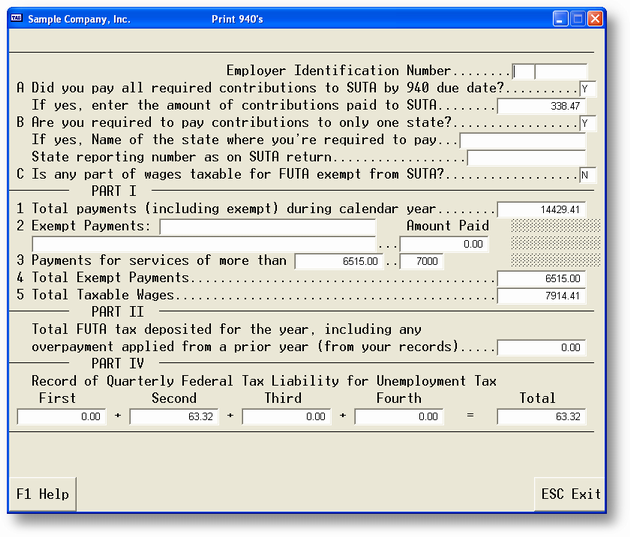
The lines for Job Cost and Time Card entry have been added to the choices available when entering in Security Levels.
ACCOUNTS RECEIVABLE
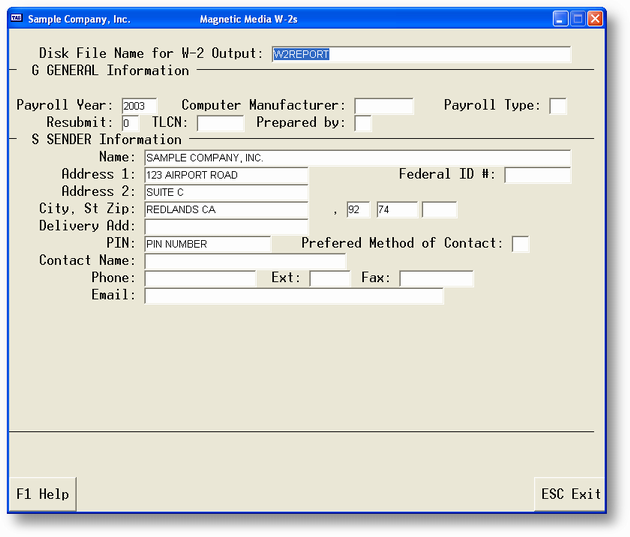
If this is a voucher for a specific job then enter the Job Code at the top of the screen. You may press the F2 key to get a list of active projects. If you choose a project the name will be displayed to the right of the code.
Changes have been made to this program to properly post to the job cost records. There are no operational changes. Please note that the system uses the job or project information originally entered with the sales order to decide which job should receive credit for the payment. When you pick an invoice and apply payment to it, the system checks the job number on the invoice and then updates the Total Receipts field for that job.
SALES ORDERS
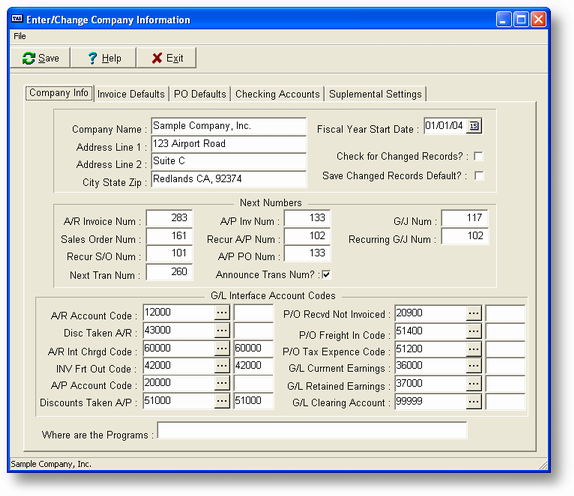
When entering a sales order you may apply it to a specific job by entering the project code in the Job field at the top of the initial entry screen. You may get a list of active projects by pressing the F2 key when the cursor is in the Job field. If you do enter a job code the Customer Code field will default to the value in the job record. There are no other operational differences.
Changes have been made to this program to properly post the job cost information entered in SO-A. There are no operational changes.
SO-I, Enter/Change Recurring Sales Orders
As with SO-A, above, you may apply a recurring sales order to a specific job by entering the project code in the Job field at the top of the initial entry screen. You may get a list of active projects by pressing the F2 key when the cursor is in the Job field. If you do enter a job code the Customer Code field will default to the value in the job record. There are no other operational differences.
Changes have been made to this program to properly print the job cost information entered in SO-A. There are no operational changes.
ACCOUNTS PAYABLE
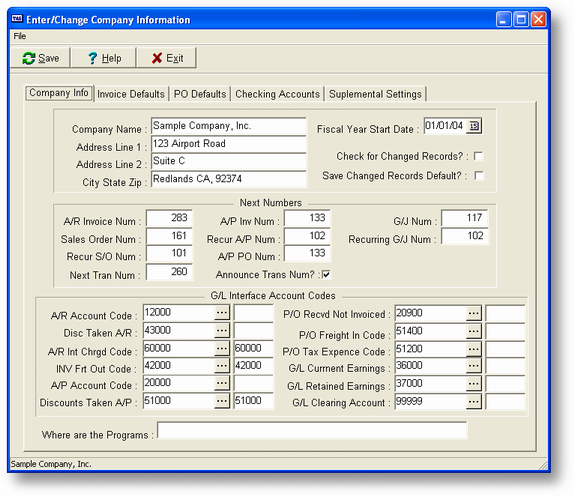
You can apply a distribution line to a job and cost as well as the standard G/L account. If part of the voucher is for a job then enter the Project Code value on the distribution line. You may press the F2 key to get a list of active jobs. If you enter a job code you will also have to enter a Cost Code. Press the F2 key to get a list of cost codes for this job. The final step before entering the standard distribution information is to enter the category (CT). This would be L - Labor, M - Materials, S - Sub-contract or O - Other. You must enter one of these letters. The balance of the entry is the same as the standard program in Advanced Accounting 7.
AP-M, Enter Recurring Vouchers
As with AP-B, Enter/Change Vouchers above you may now apply the distribution lines to specific jobs and costs. Follow the same instructions as above.
AP-N, Generate Recurring Vouchers
Changes have been made to this program to properly post to the job cost records. There are no operational changes.
PURCHASE ORDERS
PO-A, Enter/Change Purchase Orders
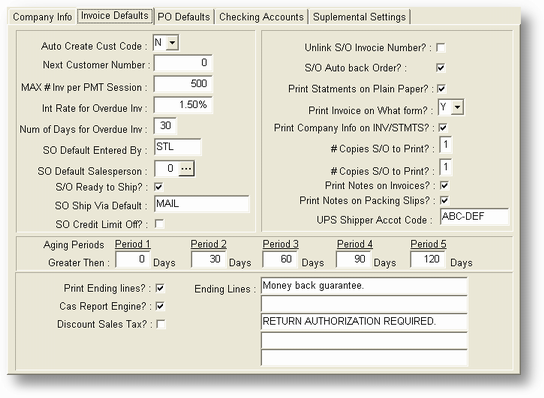
This program allows optional entry of project code (Job), cost code (Cost) and category (Cat) for each P/O line item entered. If you choose to record the P/O line for a specific job you must enter all three values. You may list active projects when in the Job field by pressing the F2 key. The same applies for applicable cost codes when in the Cost field. The category must be L - Labor, M - Materials, S - Sub-contract or O - Other.
The balance of the P/O entry program is the same.
Changes have been made to this program to properly print the job cost information entered in PO-A. There are no operational changes.
Changes have been made to this program to properly post to the job cost records. There are no operational changes.
Changes have been made to this program to properly print the job cost information entered in PO-A. There are no operational changes.
Page url: http://www.cassoftware.com.com/adv7docs/index.html?jobcost.htm